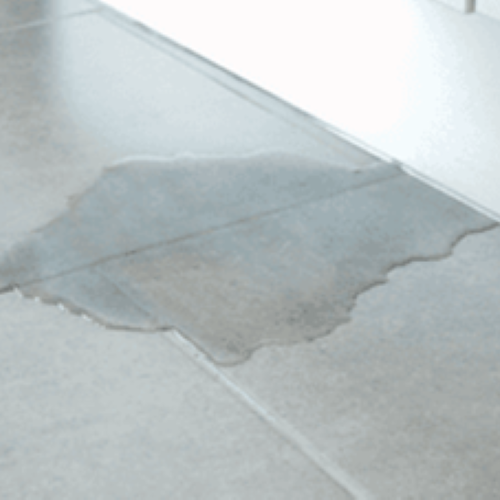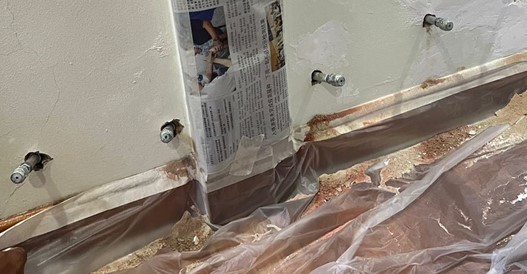Waterproofing is a process designed to prevent liquids from entering a structure. Comprehensive waterproofing measures are often used in the building to provide moisture control during construction, and waterproofing materials are applied after the structure is built to eliminate any problems that may be encountered.
Waterproofing of internal wet areas is one of the more problematic areas in building work, with most incidents of water leakage occurring at the floor and internal walls of toilets and kitchens. To enhance the water-tightness performance of the internal wet areas, it is important to look at how the structure and the waterproofing membrane are detailed. If the building is not protected against liquid coming from external factors, problems such as deterioration or damage may be encountered.
Wet areas must be waterproof to prevent water penetration that could cause dampness and deterioration of building elements. Waterproofing wet areas such as toilets is important and will bring health hazard issues such as mould growth, respiration, and skin allergies to older and younger occupants’ in the houses. Every building faces durability issues if proper precautions are not taken. Natural factors such as air, water, climate, wind, and humidity affect the durability of the building.
Waterproofing reduces internal humidity and prevents objects inside the building from being damaged by moisture and water vapor.
Leakage through walls and slabs can lead to either architectural or structural defects, depending on the extent of the leak. Poor workmanship would result in leaks that are difficult and costly to repair. Apart from the workmanship, wear and tear over time and improper renovation works may also lead to leakage.
Toilet and wet area leakage occurs over time due to deterioration of the integrity of the waterproofing membrane or floor screed, degradation of pointing between tiles and wall/floor joints, and also concrete grout around pipes and drainage. Faulty pipes/sanitary fittings/fixtures such as leakage at joints of concealed pipes and misalignment at sanitary discharge pipes may also lead to leakage.
Identify the source of the toilet and wet area leakage
- Check for water pressure in your home to find leaks in moist areas such as shower areas, and bathtubs. Check for leaks by running the tap and looking underneath the flooring such as the joints of the kerb and surroundings.
- Check if the taps drip or water meter still running even when the water is shut off.
- Visual inspect the surroundings and look for noticeable water stains on wood, walls, and ceilings and any sign of dampness spores. If you are unsure of where the begin, look for drywall panels that are sagging or crumbling.
- Bubbled paint appearing on the wall or ceiling will bring unpleasant sights to homeowners.
- Tea-like stains on the wall, ceiling, or ceiling board.
- Stalactites on the concrete ceiling behind the ceiling board.
- Water ponding on the specific corner of the floor. Damp floors can choke drainage pipes, and poor ventilation, which caused water to pool underneath.
- Mould growth and musty smell within the wet area such as bathroom, toilets, and kitchen.
- Damp concrete slab on the side of the wall or even on the toilet ceiling. The ceiling underneath may be damaged as a result of the potentially waterproofing membrane having failed or that the steel to the floor waist has been broken in some way. The grout seals around the floor may have eroded.
- Toilet leaks can be caused by a system obstruction, cracks from the WC bowl to the pipes, a loose toilet at the base, or a broken seal. If this is the case, there will be overflowing or water leaking.
Over time areas that are water-exposed area result in damaged grout, crack, and missing grout on the bathroom flooring and disgruntled neighbours below and even into the internal wall.
Insufficient, damaged, or choked drainage could be one of the causes of water ponding on the flooring causing water to seep into the weakest point.
One of the most common causes of moisture problems is poor craftsmanship and faulty waterproofing installation. To guarantee that your wet area renovations are completely watertight, make sure you engage a skilled and professional contractor to carry out the work.
The solution to resolve internal wet area leakage.
- Polyurethane (PU) Injection grouting is the most effective, cost-efficient, mess-free, time-saving, and long-lasting repair solution. It is one of the best solutions for you to consider fixing the inter-floor leakage to stop water ingress into the concrete slab apart from the traditional method of hacking and retiling your toilet flooring.
We offer advanced technology, Polyurethane (PU) Injection grouting, is a waterproofing technique that uses expanding injected polyurethane to stop water flowing through cracks, voids under slabs, concrete joints, or walls that are caused by water damage. Holes are drilled into the lower floor ceiling, and packers are inserted to carry out the polyurethane injects through the hole using either low or high pressure to inject the grout, it will expand to fill up the void or cracks caused by water damage. PU grout is a liquid resin into or in the vicinity of the leak. Once the resin contacts water, a chemical reaction occurs. The grouts ad water combination forms an expansion foam, this foam created can be flexible and resilient sealant, creating a seal through the entire ceiling concrete.
Upon completion, the plastic packers can be removed. The face of the joint and the excess materials should be cleaned on the following day and all holes are to be filled using an approved non-shrink grout material.
This method also minimal disturbance to everyday activities while the repair is being carried out. It completes within 1 day than other waterproofing options. Besides the above, it is also a highly viable and useful solution that can withstand any weather and climate changes condition. It is also the best durability which is not easily susceptible to wear and tear
- Clear penetrative waterproofing treatment (CPT) is one of the options for waterproofing internal wet areas such as bathrooms and shower areas without removing the tile from the surface. It is the easiest method to waterproof the existing wet areas. It is a material that can be applied to any surface that contacts with water. When this material dries and cures, it forms a transparent waterproof membrane. It is versatile and can be applied to most surfaces.
It is a high-build waterproofing membrane for the sealing and long-lasting protection of exterior surfaces. The coating combines a high degree of flexibility with considerable cohesive strength and water resistance.
The clear waterproofing membrane can apply to all common building materials such as concrete, brick, wood, tile, ceramic, granite, and marble surface. This membrane is water-based, flexible, scrub and water-resistant, non-flammable, non-toxic, and hazard free.
Selecting the right waterproofing membrane and reliable waterproofing contractor are very important. Good and reliable waterproofing material and workmanship can last for many years
SWC Construction is a waterproofing specialist that can inspect the wet areas of industrial, and commercial buildings, and homes. We have been working with hundreds of commercial owners, companies, and homeowners on various waterproofing projects to resolve internal wet area leakage.
As one of the best waterproofing contractors in Singapore, we offer a range of services that will make wet areas a much safer place for everyone. With more than 20 years of experience in Singapore, we obtain good reviews from our valuable customers in all work we carried out over the years. We are well committed to a team of professional technicians and consultants to bring good workmanship and effective and quality waterproofing materials for all our potential customers.





